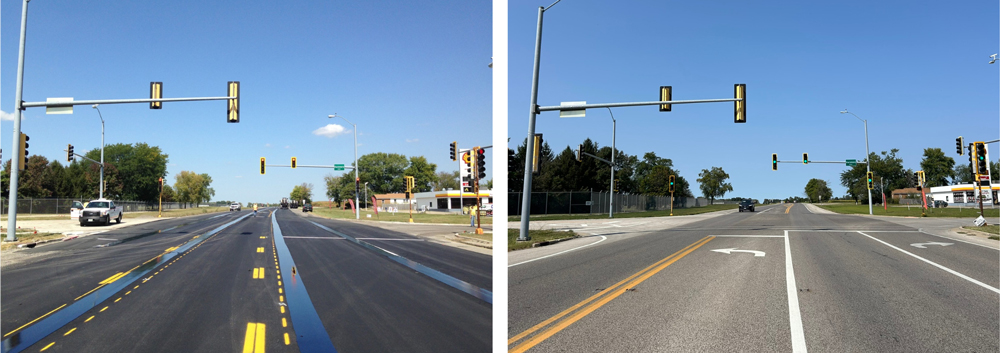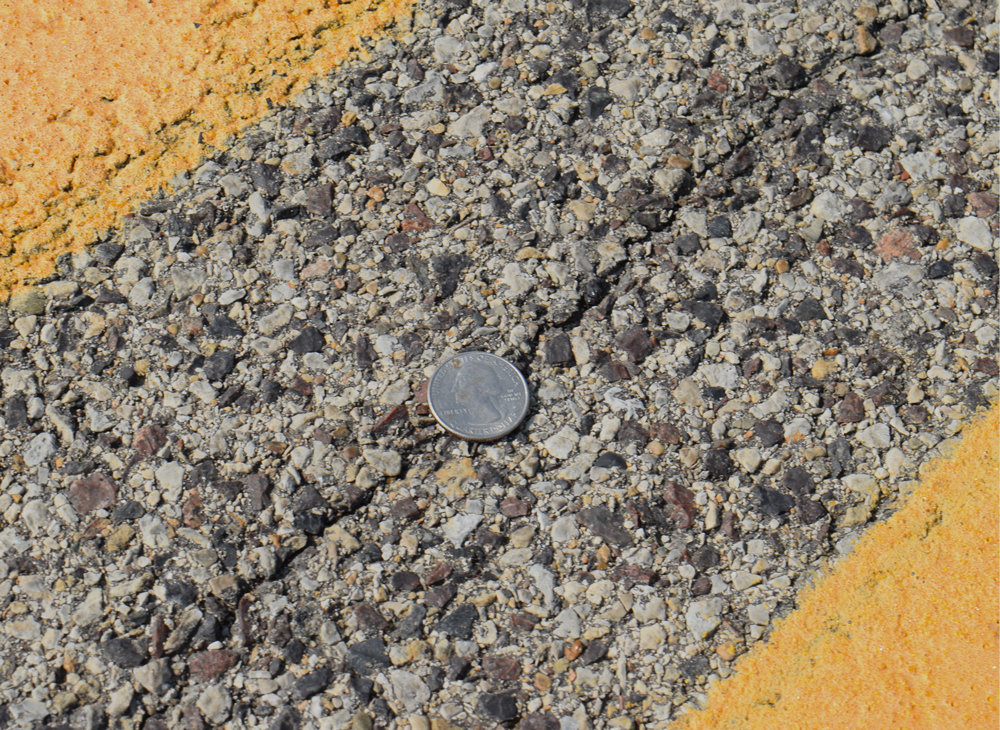How often are you repairing major roads? After years of wear and tear and damage from the elements, longitudinal joints are typically the first part of a pavement to fail. Water seeps into air voids at the most permeable part of the road and leads to premature maintenance and repair. Thankfully, there is a solution.
The void reducing asphalt membrane (VRAM), J-Band®, was developed to fill air voids in pavement from the bottom up. By decreasing permeability at the joint, VRAM can extend the life of longitudinal joints threefold, extending the life of the entire pavement. This innovative material has saved DOTs time and money as they work to maintain their road networks.
Our team recently reviewed a project in central Illinois constructed in 2017. It demonstrates J-Band’s impact on longitudinal joint performance on a highway after seven winters.
Project Details
- Owner: Illinois Department of Transportation (IDOT)
- Prime Paving Contractor: P.H. Broughton & Sons, Inc.
- VRAM Applicator: Road Fabrics, Inc.
- Location: State Route 29, Springfield, IL, Sangamon County
- Date Constructed: September 14, 2017
- Date Reviewed: 7 years post-construction, September 9, 2024
Beginning just north of Abraham Lincoln Capital Airport in Springfield, IL, this project covers 6.2 miles of SR-29. For 3.2 miles, it is a five-lane highway, and for 3 miles it is a two-lane highway. In September 2017, VRAM was sprayed, before hot mix asphalt construction, beneath all lane-to-lane joints including the centerline rumble strip. There was no control section.
Project Observations
Seven years after initial construction, this segment of SR-29 remained in excellent condition. On a sunny 75° day, the project was reviewed by Jim Cunningham, Field Support Manager from Asphalt Material Inc. (AMI). Minor surface openings were observed, which is to be expected from a seven-year-old pavement. They ranged from hairline to 1/8” openings, but more importantly, there was no notable damage to the area alongside the treated joint.
While there was no control section, the transverse and shoulder joints without VRAM required crack sealing. All of the joints with VRAM needed no maintenance.



SR-29 is just one example of the power of J-Band as a pavement preservation tool. By protecting the lane-to-lane joints and the centerline rumble strip, this VRAM will allow SR-29 to serve its community, without burdensome repair, for years to come.
To see VRAM preserve longitudinal joints for 20 years, check out the story of IDOT’s US-51.
Interested in talking with our team? Reach out today!
Editor’s Notes:
VRAM is also known as Longitudinal Joint Sealant (LJS) by the state of Illinois. J-Band® is a registered trademark of Asphalt Materials, Inc. (AMI). J-Band® was created in the labs of the Heritage Research Group (HRG) and is a product of AMI.
